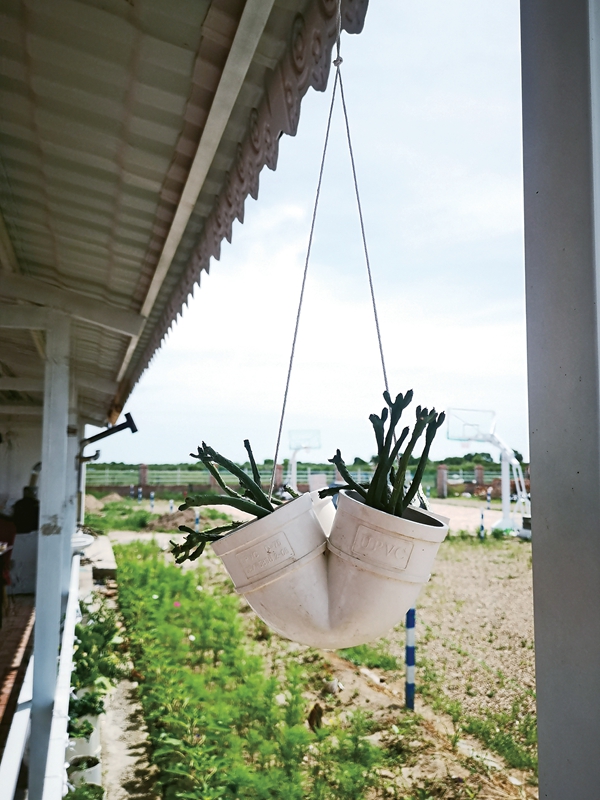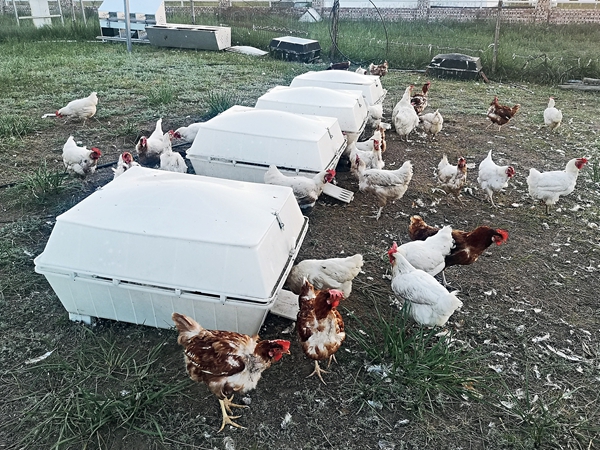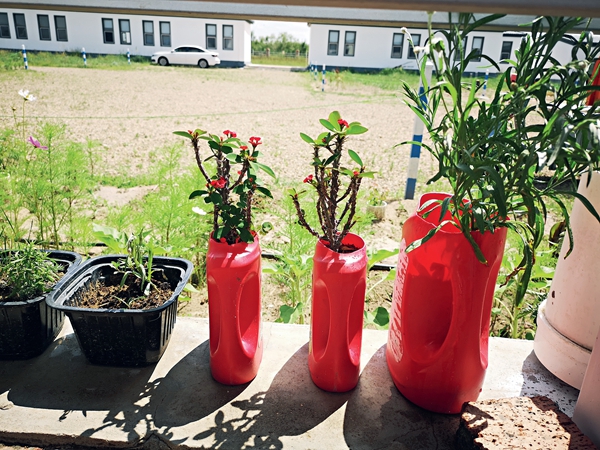Researchers Inject Creativity, Innovation into Environmental Protection

Twenty-two years ago, a team of researchers arrived at Hunshandake Sandland, in the western region of Hexigten Banner, in Xilin Gol League, in North China's Inner Mongolia Autonomous Region. The team settled down, and then began combating severe desertification caused by overgrazing. In 2002, they established Hunshandake Sandland Ecological Research Station, under the Chinese Academy of Sciences' Institute of Botany.
Hunshandake, meaning "yellow wild horse" in Mongolian, is one of the four largest sand lands in northern China. It is a well-known sand land that has water sources. There are many small rivers and lakes on the sand land. It was rich in water and grass before the grassland became a desert. In recent years, the team has conducted research into ways of combating desertification and returning the desert back to lush grassland.
Environmental protection was part of the equation during the design of the research station, which covers nearly 5,000 square meters. The researchers recycled discarded steel to make a steel gate. They used old bricks to build a fence around the vegetable garden. They mixed discarded wine bottles into cement, which was used to construct the walls around the station. Discarded plastic bottles, buckets and pipes were used as "flowerpots" to grow flowers, plants and vegetables.
Some building materials were left over after the station was built. The researchers used the materials to make a cabinet, cupboard and cooking bench in the kitchen. They recycled an old gas tank into a baking oven. Discarded automobile tires were used as "dining chairs" in the station's courtyard.

The station is situated on a remote pasturing area of the sand land, and there is no market around. The researchers must drive about 40 kilometers to the nearest town to buy things. So, they economize on their daily necessities. To protect the sand land's ecological environment, they have reused their own garbage; for example, they have minced organic kitchen waste to make chicken feed and/or to ferment enzymes for fertilizer. The other waste is used to light the fire in the stove.
"We inject our creativity, innovation and sense of design into the methods of recycling the waste. Sometimes, our inspiration for solving a scientific-research problem comes from our deeds to protect the environment," says Li Yonggeng, head of the station.
In the past, prohibiting grazing on degraded grasslands was generally considered an effective means of combating desertification and restoring the grassland. However, prohibiting grazing limited herdsmen's source of income. It did not reach a balance between economic development and environmental protection. So, the researchers conducted experiments on how to restore the grassland while helping local herdsmen increase their incomes.
In 2009, they found a way to resolve the problem — restoring the grassland by raising chickens on the grassland. Sheep dig and eat the roots of the grass, while chickens only eat the tender part of the grass. Chickens eat injurious insects in the grass, and chickens' feces make good fertilizer to improve the soil and increase the production of grass.
After years of research, the team has made progress in restoring the grassland — by letting chickens graze. They have upgraded the equipment and technologies used to raise chickens. The chickens are now kept in two-storey henhouses that can easily be moved. The removable henhouses are convenient for practicing rotation grazing. The upper storey of the henhouse is used to store chicken feed and the bottom storey is used to house the chickens. A funnel is situated between the two storeys, so the feed can be dispensed slowly to the first story. It can provide enough feed for 20 chickens to eat for seven to 10 days. The design helps prevent food waste, and it reduces labor costs.

The researchers also designed an automatic drinking device. A small switch is located near the door of the henhouse, and a thin pipe connects the switch with an underground water source. When the chicken pecks the switch, it can drink the water.
Chicken grazing has been promoted among the local herdsmen. The ecological-economic method has achieved great results, in both restoring the grassland and in helping herdsmen increase their incomes. The researchers have set a good example for their peers, both at home and abroad.
At the same time, they have made an all-out effort to firm up the concept of environmental protection in ordinary people's hearts. Every summer, many parents take their children to visit the station, to learn the concepts and innovative methods of environmental protection and garbage disposal. It is an opportunity for the children to increase their environmental awareness, and to cultivate a sense of responsibility for protecting the environment.
"The resources on the earth are limited. Waste and overuse of any resource may change the ecological environment. If a person is aware of environmental protection, he/she is able to contribute to environmental protection by doing some little things. For us, environmental protection is not merely a concept, but a responsibility that we need to undertake," says Li.
Photos by Meng Xianmei
(Women of China English Monthly September 2022 issue)
Please understand that womenofchina.cn,a non-profit, information-communication website, cannot reach every writer before using articles and images. For copyright issues, please contact us by emailing: website@womenofchina.cn. The articles published and opinions expressed on this website represent the opinions of writers and are not necessarily shared by womenofchina.cn.






.jpg)

 WeChat
WeChat Weibo
Weibo 京公网安备 11010102004314号
京公网安备 11010102004314号